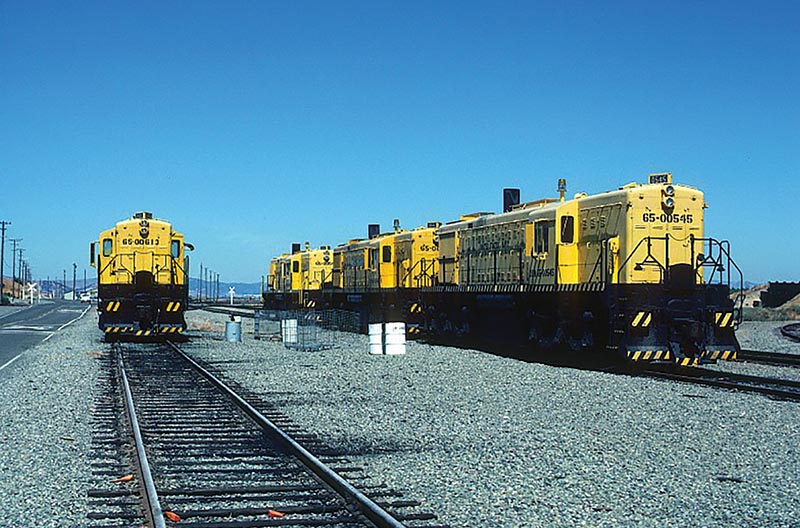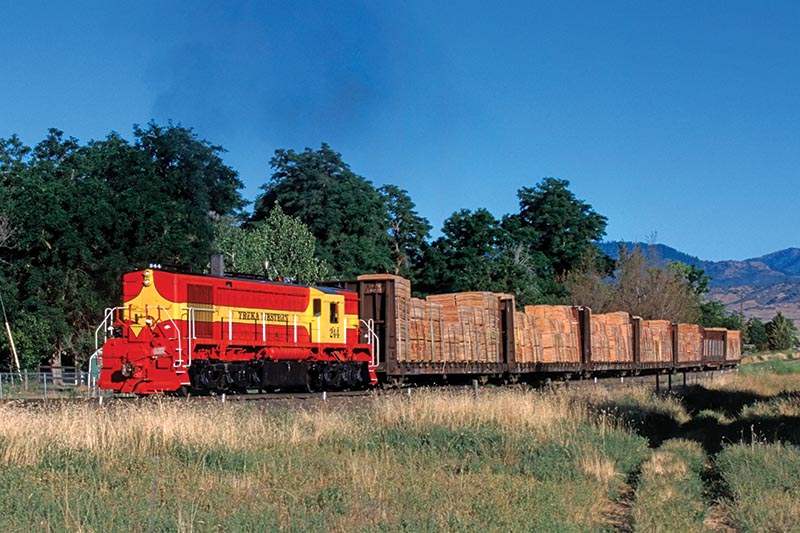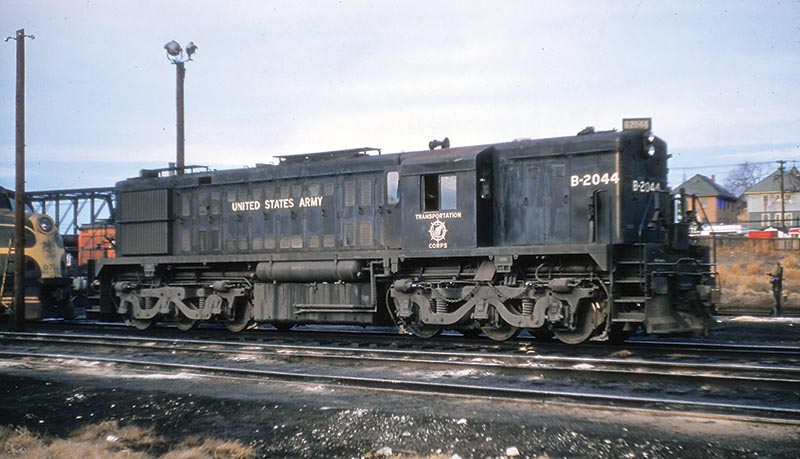 By R. Craig Rutherford/photos as noted
By R. Craig Rutherford/photos as noted
When the Cold War began to heat up in the 1950s, American Locomotive Company became a reluctant partner with the U.S. Army. The builder provided a specialized road switcher — with the model designation RSX-4 — that would briefly serve in the Korean War, then quickly vanish from the military scene. The diesels became a fleeting part of Alco’s storied history.
The story of Alco’s RSX-4 can’t be told fully without first outlining the government’s new Military Road Switcher MRS-1 program — initiated in 1951 — and competitor Electro-Motive Division’s involvement. The U.S. Army Transportation Corps’ need for the new MRS-1 was influenced by the ongoing Korean War as well as the growing perception of possible hostilities elsewhere around the globe, including Russia.

In the early 1970s, 20 Alco-built MRS-1s were transferred to the U.S. Navy to work at shipyards and weapon support centers around the country. About 20 percent of the Navy’s Alco MRS-1 fleet was at Port of Chicago, Calif., in September 1982. Thomas E. Hirsch photo
The U.S. Army solicited bids for the MRS-1 from General Electric, EMD, and Alco — the major diesel builders of the period. Alco, however, had no interest in the project nor a desire to bid. Sales for its diesel cab-units had tanked and Alco wanted to focus resources on the expansion of its “World” locomotive line (low-profile C-C cab units) and other new business technologies, including nuclear.
General Electric, however, was interested and went on to win the contract. The industrial giant talked Alco into taking on the project under sub-contract. At Alco, the new road switcher would be designated as model RSX-4 and built under specification E1670. The six-axle diesel featured a 1,600-hp 12-cylinder 244D engine, 65-mph gearing, and a low-profile car body (13 feet 6 inches) to cope with tighter European clearances. It would also employ multi-gauge trucks that could utilize a wide range of wheel sets from 1,435 mm (narrow gauge) to 1,668 mm (broad gauge). Tri-mount trucks were double-equalized and driven by GE GT731 traction motors. The locomotive could be fitted with European-style buffer plates as needed. This overall flexibility, combined with overall reduction in locomotive weight, enabled operation of the 55-foot 11-inch MRS-1 on railroads located around the world.

In the early 2000s, Yreka Western had a fair amount of freight traffic. On July 12, 2003, YW 244 is “doubling the grade,” bringing half of its train with outbound loads of plywood veneer up the steep Shasta River grade to the interchange at Montague, Calif. The crew will later return with another cut of loaded woodchip cars. Greg Brown photo
The USATC military bid documents also specified that the new model be capable of operating in diverse climatic environments from 40 degrees below zero to 125 degrees Fahrenheit. This requirement led Alco to install a small steam generator to keep fuel supply and air system components from freezing. Interestingly, some units received wooden radiator fan blades to prevent cracking during severe cold weather operation.
In contrast, EMD’s MRS-1 featured the builder’s popular 1,500-hp 567 prime mover; however, the LaGrange company was reluctant to modify the engine in order to meet military specifications. As might be expected, USATC pressure prevailed. Otherwise, the Alco and EMD models were similar; the differences were primarily external…
 Read the rest of this story in the October 2020 issue of Railfan & Railroad!
Read the rest of this story in the October 2020 issue of Railfan & Railroad!



